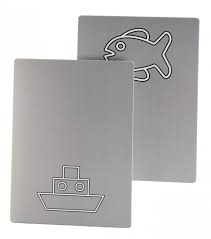Assessing Strabismus – Back To Basics:
The assessment of strabismus and measurement of strabismus is important because it helps both the medical and surgical management of strabismus.
I think my child may have an eye turn. How will you be able to test my child’s vision?
If you suspect your child may have an eye turn, they need to have a full, dilated eye examination. We are used to dealing with children where the level of cooperation is minimal. We regularly assess the eyes and vision of babies, infants, toddlers, young children, older children, adolescents and adults.
There are various methods and tests we use to measure babies and young children’s vision. Tests for babies, infants and toddlers include assessing fixation on small, detailed objects, faces and toys and using forced preferential looking tests such as Teller Acuity Cards or Cardiff Cards. For vision assessments in young children aged from about 2.5 years, a naming or matching game using shapes is usually possible. We use a test called Lea symbols, and we test at the gold standard test distance of 6 metres where possible. Young children from around the age of 3.5 years are usually able to match letters, and children from about 4.5 years are generally able to name the letters. A full, LogMAR style, 6 metre linear vision chart similar to an adult vision chart can generally be used when assessing children’s vision from the age of about 5.5 years.
How do you measure strabismus?
- Cover test – a well-trained and knowledgeable eye health care professional performing a cover test is the most accurate way of detecting strabismus. The cover test is where a paddle or occluder is used to cover over each eye in turn to asses for the presence of strabismus. The patient is instructed to look at a target whilst the eye is covered. The examiner watches the fixation behaviour of the uncovered eye
- Light reflections – is a test whereby a light is shone into the eyes, and the reflections of this light are examined. If the light reflexes fall on the same part of the pupil in both eyes, the reflections are said to be symmetrical and the eyes straight at that point in time. If the reflections fall on different positions on the two eyes, strabismus may be present.
- Prism bar – Prisms are clear, triangular shaped tools that bend light rays. Prisms are used to assess strabismus as they bend light rays entering the eye. The stronger the prism, the more the prism bends or refracts the light entering the eye. A prism bar is a stack of prisms one on top of another that are arranged in a pattern from weak to strong. The larger the prism needed to bend the light so that the strabismus is neutralised, the larger the size of the eye turn.
- Prism bar cover test: Is used to measure the exact size of the strabismus. The prism bar is put over the misaligned eye, and the prism strength is increased until the movement shown on cover testing is neutralised. The size measured can vary on different fixation distances, position of gaze, with and without glasses, and with and without compensatory head postures.
- Ocular movements – assessment of all of the extra ocular muscles
- Other tests are used to give an idea about the type of strabismus or the effects on the visual system (for example, stereoscopic vision and visual acuity).
Why is measuring strabismus important?
Accurate measurements of strabismus are important to ensure the correct treatment of strabismus. Measuring strabismus can provide us with before and after treatment results in an objective fashion, and can also be used to demonstrate change in the angle of strabismus or stability over a period of time.
Sometimes several visits are required to obtain accurate strabismus measurements, especially before strabismus surgery.





